

others
US Dollar eases a touch ahead of PMI with weekly gain not at risk – Crypto News
- The US Dollar trades higher for the week after European PMI’s sink lower.
- Markets will focus on the US S&P Global PMI data for June on Friday.
- The US Dollar index trades in the green and could lock in a third consecutive week of gains.
The US Dollar (USD) falls back a bit to test the European low, after earlier edging higher on Friday ahead of the preliminary US S&P Global Purchasing Managers Index (PMI) report for June. The US Dollar shot higher in the last hours, with the Greenback outpacing the Japanese Yen (JPY) again, hitting 159.00 at USD/JPY, whilst tech wale Nvidia dove over 3% and lost $91 billion at the US closing bell.
On the economic data front, earlier in the day, S&P Global and Hamburg Commercial Bank (HCOB) released the Eurozone PMI data for June, showing lower-than-expected numbers. Manufacturing data further deepened into contraction at 45.6, while the services sector index fell to 52.6 from 53.2 in May. On the US side, traders will especially focus on the services component, as it accounts for two-thirds of the economy. Expectations for the US S&P Global Services PMI range from 55.00 to 52.00, with the previous month’s number at 54.8.
Daily digest market movers: Compairing PMI’s
- Masato Kanda, vice-minister for international affairs at Japan’s Ministry of Finance, said that Japan is ready to take proper action on FX when needed. This comment sent the US Dollar back up to 159 against the Japanese Yen.
- Preliminary S&P Global/HCOB PMI data for France, Germany, and the Eurozone showed worst-than-expected numbers. As a result, the Euro retreats further against the US Dollar, falling below 1.07.
- At 13:45 GMT, S&P Global will release the June’s PMI preliminary reading per sector:
- Services sector is expected to ease to 53.7 from 54.8 in May.
- Manufacturing should remain rather stable, t showing 51.00 in June from 51.3 the previous month.
- The Composite Index was at 54.5 in May, with no consensus view available.
- At 14:00 GMT, in the slipstream of the US PMI release, Existing Home Sales data for May will be released. The expected number is 4.10 million in May, down from the 4.14 million seen in April.
- Equities are still trying to recover from the massive punch they received from the $91 billion value evaporating in Nvidia. There are red numbers across the board and across the globe for all major indices.
- The CME Fedwatch futures for September are backing a rate cut, with odds now standing at 57.9% for a 25 basis point cut. A rate pause stands at a 35.9% chance, while a 50-basis-point rate cut has a slim 6.2% possibility.
- The US 10-year benchmark rate is trading at 4.243, right in the middle of this week’s range after briefly hitting 4.29% on Thursday.
US Dollar Index Technical Analysis: Still outperforming?
The US Dollar Index (DXY) is breaking higher and has good odds to lock in a third consecutive week of gains. Although refraining from any soccer analogies, looking at the chart, it is quite clear that the Greenback has not played a good game this week. However, what counts is the end result, and that looks to be a win for the Greenback with a big thank you to the weaker Japanese Yen, France’s political turmoil, and the further contracting PMIs in Europe as main drivers.
On the upside, there are no big changes to the levels traders need to watch out for. The first level to watch is 105.88, which triggered a rejection at the start of May and will likely play its role as resistance again. Further up, the biggest challenge remains at 106.51, the year-to-date high from April 16.
On the downside, that 105.52 level is first support ahead of the trifecta of Simple Moving Averages (SMA) is still playing as support. First is the 55-day SMA at 105.14, safeguarding the 105.00 figure. A touch lower, near 104.61 and 104.48, both the 100-day and the 200-day SMA are forming a double layer of protection to support any declines. Should this area be broken, look for 104.00 to salvage the situation.
Inflation FAQs
Inflation measures the rise in the price of a representative basket of goods and services. Headline inflation is usually expressed as a percentage change on a month-on-month (MoM) and year-on-year (YoY) basis. Core inflation excludes more volatile elements such as food and fuel which can fluctuate because of geopolitical and seasonal factors. Core inflation is the figure economists focus on and is the level targeted by central banks, which are mandated to keep inflation at a manageable level, usually around 2%.
The Consumer Price Index (CPI) measures the change in prices of a basket of goods and services over a period of time. It is usually expressed as a percentage change on a month-on-month (MoM) and year-on-year (YoY) basis. Core CPI is the figure targeted by central banks as it excludes volatile food and fuel inputs. When Core CPI rises above 2% it usually results in higher interest rates and vice versa when it falls below 2%. Since higher interest rates are positive for a currency, higher inflation usually results in a stronger currency. The opposite is true when inflation falls.
Although it may seem counter-intuitive, high inflation in a country pushes up the value of its currency and vice versa for lower inflation. This is because the central bank will normally raise interest rates to combat the higher inflation, which attract more global capital inflows from investors looking for a lucrative place to park their money.
Formerly, Gold was the asset investors turned to in times of high inflation because it preserved its value, and whilst investors will often still buy Gold for its safe-haven properties in times of extreme market turmoil, this is not the case most of the time. This is because when inflation is high, central banks will put up interest rates to combat it. Higher interest rates are negative for Gold because they increase the opportunity-cost of holding Gold vis-a-vis an interest-bearing asset or placing the money in a cash deposit account. On the flipside, lower inflation tends to be positive for Gold as it brings interest rates down, making the bright metal a more viable investment alternative.
-

 Cryptocurrency1 week ago
Cryptocurrency1 week agoWhale Sells $407K TRUMP, Loses $1.37M in Exit – Crypto News
-

 Blockchain1 week ago
Blockchain1 week agoRobinhood Dealing With Fallout of Tokenized Equities Offering – Crypto News
-

 Cryptocurrency1 week ago
Cryptocurrency1 week agoSatoshi-Era Bitcoin Whale Moves Another $2.42 Billion, What’s Happening? – Crypto News
-

 Blockchain6 days ago
Blockchain6 days agoRipple and Ctrl Alt Team to Support Real Estate Tokenization – Crypto News
-
Technology6 days ago
Fed Rate Cut Odds Surge As Powell’s Future Hangs In The Balance – Crypto News
-

 Cryptocurrency1 week ago
Cryptocurrency1 week agoStrategy Resumes Bitcoin Buys, Boosting Holdings to Over $72 Billion in BTC – Crypto News
-

 Cryptocurrency1 week ago
Cryptocurrency1 week agoBitcoin Breaches $120K, Institutional FOMO Takes and House Debate Propel Gains – Crypto News
-
Technology6 days ago
Fed Rate Cut Odds Surge As Powell’s Future Hangs In The Balance – Crypto News
-
Business5 days ago
XLM Is More Bullish Than ETH, SOL, And XRP, Peter Brandt Declares – Crypto News
-
Cryptocurrency1 week ago
Why Is Bitcoin Up Today? – Crypto News
-
Business1 week ago
Pepe Coin Rich List June 2025: Who’s Holding Highest PEPE as it Nears Half a Million Holders? – Crypto News
-
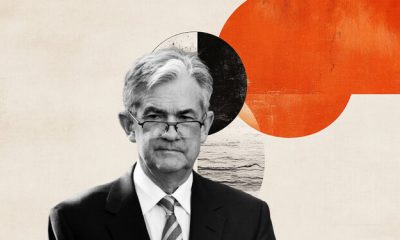
 others6 days ago
others6 days agoEUR/USD recovers with trade talks and Fed independence in focus – Crypto News
-
Business5 days ago
XRP Lawsuit Update: Ripple Paid $125M in Cash, Settlement Hinges on Appeal – Crypto News
-
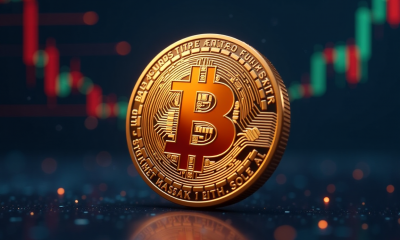
 Cryptocurrency5 days ago
Cryptocurrency5 days agoBitcoin trades near $119K after new all-time high; Coinbase rebrands wallet to ‘Base App’ – Crypto News
-

 Blockchain1 week ago
Blockchain1 week agoZiglu Faces $2.7M Shortfall as Crypto Fintech Enters Special Administration – Crypto News
-

 Cryptocurrency1 week ago
Cryptocurrency1 week agoCardano’s $1.22 target: Why traders should be aware of THIS ADA setup – Crypto News
-

 Metaverse7 days ago
Metaverse7 days agoWhy voice is emerging as India’s next frontier for AI interaction – Crypto News
-

 Metaverse6 days ago
Metaverse6 days agoNvidia’s Jensen Huang says AI ‘fundamental like electricity’, praises Chinese models as ‘catalyst for global progress’ – Crypto News
-
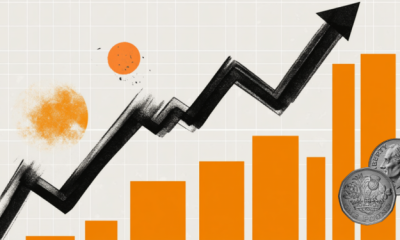
 others5 days ago
others5 days agoGBP/USD rallies on US PPI dip and Trump’s potential Powell removal – Crypto News
-

 others5 days ago
others5 days agoGBP/USD rallies on US PPI dip and Trump’s potential Powell removal – Crypto News
-
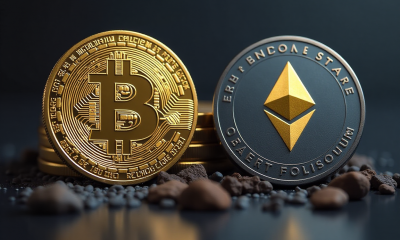
 Cryptocurrency1 week ago
Cryptocurrency1 week agoBitcoin and Ethereum ETFs record $3.6B inflows this week – Crypto News
-

 Technology1 week ago
Technology1 week agoAmazon Prime Day Sale 2025: Best earphones and headphone deals with up to 70% off – Crypto News
-

 Blockchain1 week ago
Blockchain1 week agoUK Banks Should not Issue Stablecoins – Crypto News
-

 Cryptocurrency1 week ago
Cryptocurrency1 week agoDonald Trump Jr. backs social media startup aiming to become a crypto powerhouse – Crypto News
-

 Technology1 week ago
Technology1 week agoGoogle, Anthropic, OpenAI and xAI join US defence to tackle national security with AI – Crypto News
-
Business1 week ago
CME XRP Futures Hit $1.6B In Total Trading Volume Since Launch – Crypto News
-
![Stellar [XLM] bulls exhausted after rally - Is a pullback nearby?](https://dripp.zone/news/wp-content/uploads/2025/07/Stellar-XLM-bulls-exhausted-after-rally-Is-a-pullback.webp-400x240.webp)
![Stellar [XLM] bulls exhausted after rally - Is a pullback nearby?](https://dripp.zone/news/wp-content/uploads/2025/07/Stellar-XLM-bulls-exhausted-after-rally-Is-a-pullback.webp-80x80.webp) Cryptocurrency1 week ago
Cryptocurrency1 week agoStellar [XLM] bulls exhausted after rally – Is a pullback nearby? – Crypto News
-
Cryptocurrency1 week ago
Fed’s Hammack Raises Inflation Concerns Amid Push For Interest Rate Cut – Crypto News
-

 Cryptocurrency7 days ago
Cryptocurrency7 days agoIt’s a Statement, Says Bitfinex Alpha – Crypto News
-

 Cryptocurrency6 days ago
Cryptocurrency6 days ago1inch price forecast: 1INCH hits 7-month high after double digit gains – Crypto News
-

 Cryptocurrency6 days ago
Cryptocurrency6 days ago1inch price forecast: 1INCH hits 7-month high after double digit gains – Crypto News
-
Business6 days ago
Ethereum Price Prediction- Bulls Target $3,700 As ETH Treasury Accumulation Soars – Crypto News
-

 others6 days ago
others6 days agoTop Crypto Exchange by Trading Volume Binance Announces Airdrop for New Ethereum (ETH) Ecosystem Altcoin – Crypto News
-

 others5 days ago
others5 days agoVanEck Details Key Drivers Boosting Bitcoin Price, Including Corporate Treasury Demand, ETF Flows and More – Crypto News
-
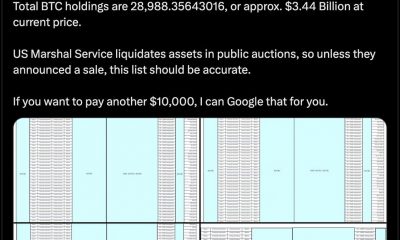
 De-fi5 days ago
De-fi5 days agoU.S. Marshals Peg Federal Bitcoin Holdings at 28,988 Tokens Worth $3.4 B – Crypto News
-
Cryptocurrency5 days ago
Russia’s $85 Billion Sberbank to Launch Crypto Custody Services – Crypto News
-

 Blockchain5 days ago
Blockchain5 days agoNasdaq Exchange Files SEC Form to List Staking Ethereum ETF – Crypto News
-

 Cryptocurrency4 days ago
Cryptocurrency4 days agoAnarchy, crime and stablecoins – Blockworks – Crypto News
-
Technology1 week ago
Peter Schiff Reignites Bitcoin Criticism, Calls 21M Supply Arbitrary – Crypto News
-
Business1 week ago
Ethereum ETFs Record Best Week Since Launch With $900M Inflows – Crypto News
-

 De-fi1 week ago
De-fi1 week agoOG Large-Cap Altcoins Lead Market Rally – Crypto News
-

 others1 week ago
others1 week agoJPMorgan Chase CEO Says Traders May Be Seriously Mistaken on Fed Rate Cuts: Report – Crypto News
-

 Cryptocurrency1 week ago
Cryptocurrency1 week agoFriday charts: The rise of zero-sum thinking – Crypto News
-

 others1 week ago
others1 week agoCrypto Hacker Who Drained $42,000,000 From GMX Goes White Hat, Returns Funds in Exchange for $5,000,000 Bounty – Crypto News
-

 Cryptocurrency1 week ago
Cryptocurrency1 week agoPump.fun Concludes $500M ICO in 12 Minutes — But Something Doesn’t Add Up – Crypto News
-

 Cryptocurrency1 week ago
Cryptocurrency1 week agoWhy Are So Many Crypto Games Shutting Down? Experts Weigh In – Crypto News
-

 De-fi1 week ago
De-fi1 week agoRobinhood Opens Ether and Solana Staking to US Users – Crypto News
-

 Cryptocurrency1 week ago
Cryptocurrency1 week agoTop 3 altcoins under $1 worth watching: Sei, Ethena, Arbitrum – Crypto News
-
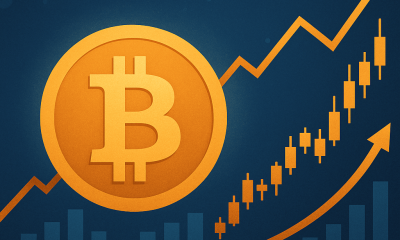
 Blockchain1 week ago
Blockchain1 week agoThe Bitcoin Liquidity Supercycle Has Just Begun: Hedge Fund CEO – Crypto News
-

 De-fi1 week ago
De-fi1 week agoRipple’s RLUSD Market Cap Passes $515M, Flips TrueUSD – Crypto News












